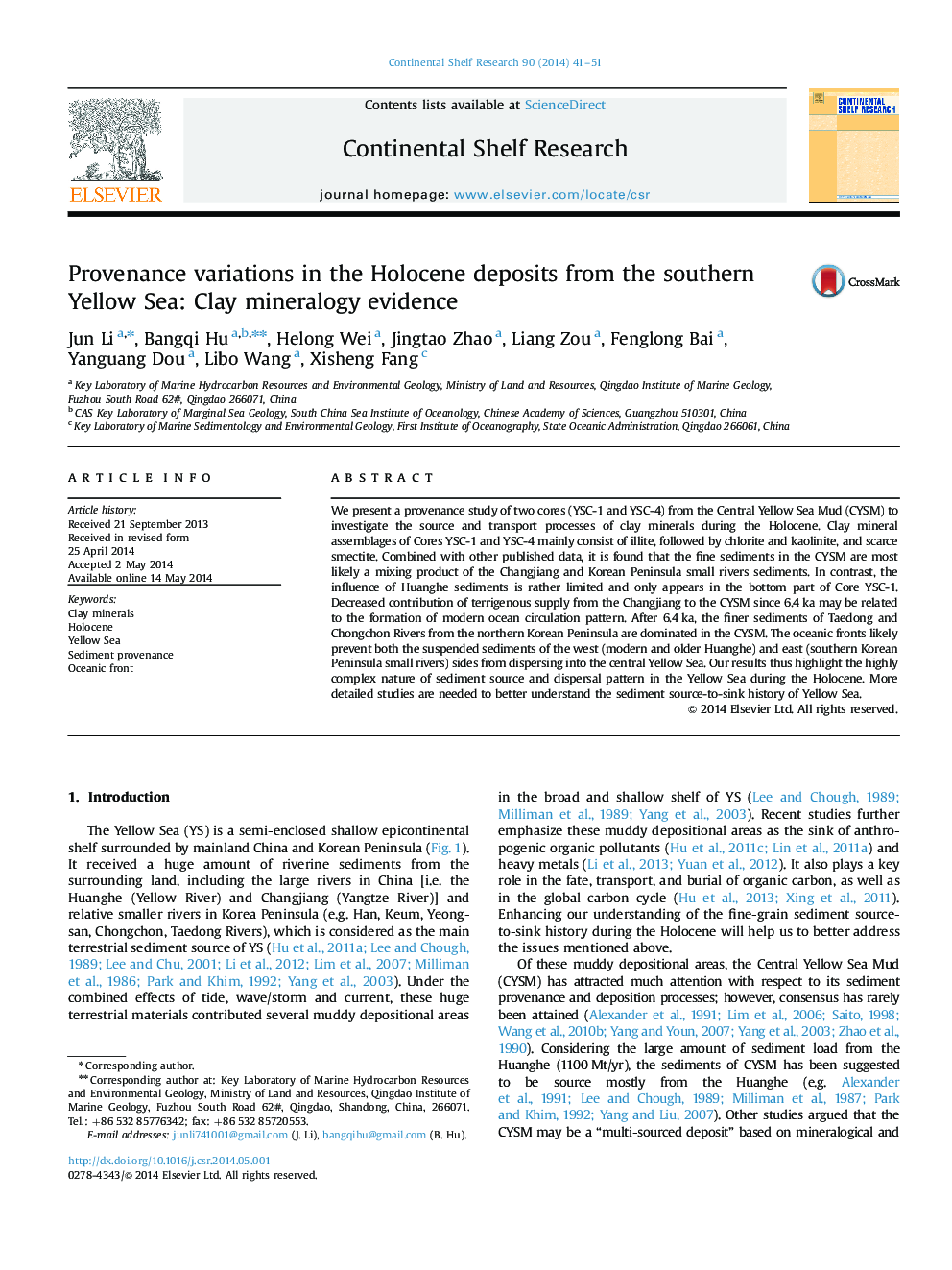| Article ID | Journal | Published Year | Pages | File Type |
|---|---|---|---|---|
| 4531797 | Continental Shelf Research | 2014 | 11 Pages |
•The Holocene clay minerals of two cores from the central Yellow Sea were studied.•CYSM is a mixing product of the Changjiang and Korean Peninsula small rivers sediments.•The fine sediments from the West Korea Bay are dominated in CYSM since 6.4 ka.•Oceanic fronts play a critical role in sediment transport process of YS.
We present a provenance study of two cores (YSC-1 and YSC-4) from the Central Yellow Sea Mud (CYSM) to investigate the source and transport processes of clay minerals during the Holocene. Clay mineral assemblages of Cores YSC-1 and YSC-4 mainly consist of illite, followed by chlorite and kaolinite, and scarce smectite. Combined with other published data, it is found that the fine sediments in the CYSM are most likely a mixing product of the Changjiang and Korean Peninsula small rivers sediments. In contrast, the influence of Huanghe sediments is rather limited and only appears in the bottom part of Core YSC-1. Decreased contribution of terrigenous supply from the Changjiang to the CYSM since 6.4 ka may be related to the formation of modern ocean circulation pattern. After 6.4 ka, the finer sediments of Taedong and Chongchon Rivers from the northern Korean Peninsula are dominated in the CYSM. The oceanic fronts likely prevent both the suspended sediments of the west (modern and older Huanghe) and east (southern Korean Peninsula small rivers) sides from dispersing into the central Yellow Sea. Our results thus highlight the highly complex nature of sediment source and dispersal pattern in the Yellow Sea during the Holocene. More detailed studies are needed to better understand the sediment source-to-sink history of Yellow Sea.
